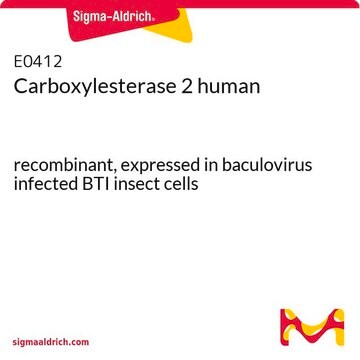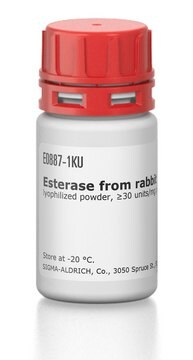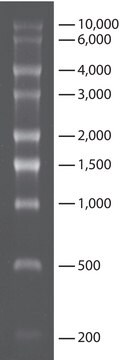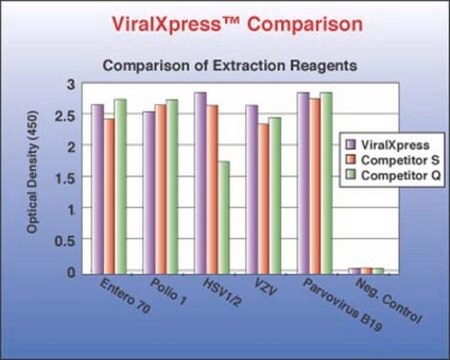C4749
Carboxylesterase 2 human
recombinant, expressed in mouse NSO cells, ≥95% (SDS-PAGE)
Sinónimos:
CES2, CES2A1
About This Item
Productos recomendados
recombinant
expressed in mouse NSO cells
Quality Level
assay
≥95% (SDS-PAGE)
form
solution
specific activity
≥1.0 EU/μg
30,000 pmol/min-μg protein
mol wt
predicted mol wt ~60 kDa
concentration
0.4-0.6 mg/mL
impurities
≤1.0 EU/μg endotoxin
shipped in
dry ice
storage temp.
−70°C
Gene Information
human ... CES2(8824)
¿Está buscando productos similares? Visita Guía de comparación de productos
Biochem/physiol Actions
Unit Definition
Physical form
signalword
Danger
hcodes
pcodes
Hazard Classifications
Resp. Sens. 1
Storage Class
10 - Combustible liquids
wgk_germany
WGK 1
flash_point_f
Not applicable
flash_point_c
Not applicable
Certificados de análisis (COA)
Busque Certificados de análisis (COA) introduciendo el número de lote del producto. Los números de lote se encuentran en la etiqueta del producto después de las palabras «Lot» o «Batch»
¿Ya tiene este producto?
Encuentre la documentación para los productos que ha comprado recientemente en la Biblioteca de documentos.
Nuestro equipo de científicos tiene experiencia en todas las áreas de investigación: Ciencias de la vida, Ciencia de los materiales, Síntesis química, Cromatografía, Analítica y muchas otras.
Póngase en contacto con el Servicio técnico









